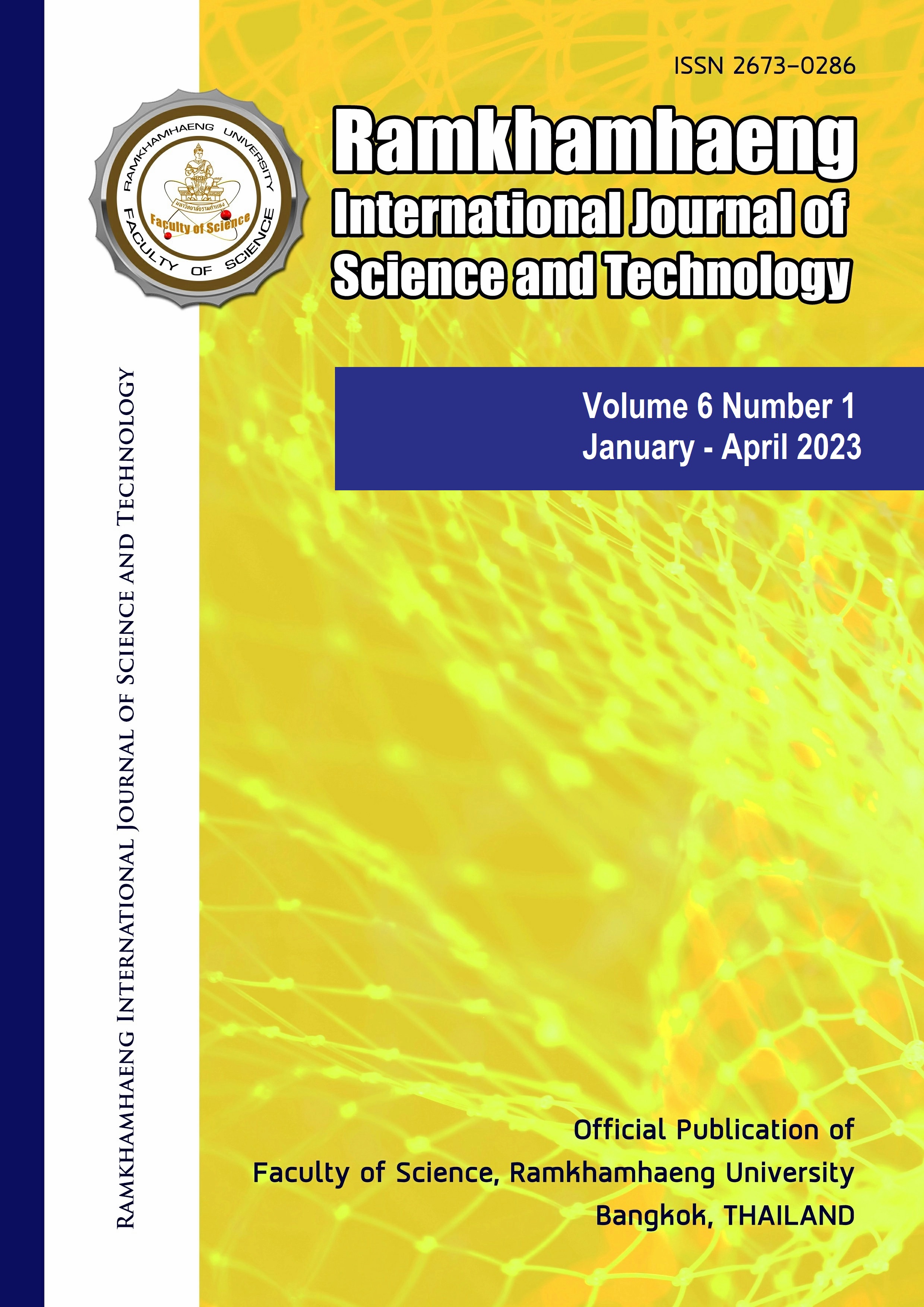Growth Rates of Coral Micro-Fragments from A Coral Restoration Project at Koh Larn, Chonburi Province, Thailand
Keywords:
Growth rate, Micro-fragmentation, Porites lutea, Restoration, Chonburi ProvinceAbstract
This study investigates the growth rates of Porites lutea coral fragments using coral micro-fragmentation for restoration at the Ao Nuan nursery plots in Koh Larn, Chonburi Province, Thailand. The coral fragments were divided into three groups based on diameter (1, 2, and 3 cm), attached to cement plugs, and placed on the coral reef nursery plots. After nine months, successful fusion was observed, and the average growth rates of micro-fragments for each size were 51.32%, 31.24%, and 29.54%, respectively. Statistical analysis revealed a significant difference in the mean growth rates between coral fragments of different sizes. Specifically, the initial diameter of 1 cm exhibited the highest mean growth rate compared to the other sizes in this study. These findings provide valuable insights into the optimal size of micro-fragments for coral reef restoration efforts, which can be used to develop more effective coral propagation strategies. The results of this study demonstrate the feasibility of using coral micro-fragmentation for coral reef restoration in the Ao Nuan nursery plot. Furthermore, the findings highlight the potential of this technique to be used in other coral restoration programs around the world. By understanding the optimal size of micro-fragments for coral growth, restoration efforts can be optimized and more efficient, leading to successful and sustainable coral reef restoration.
References
Baird, A. H., & Marshall, P. A. (2002). Mortality, growth and reproduction in scleractinian corals following bleaching on the Great Barrier Reef. Marine Ecology Progress Series, 237, 133-141.
DeMerlis, A., Kirkland, A., Kaufman, M. L., Mayfield, A. B., Formel, N., Kolodziej, G., ... & Enochs, I. C. (2022). Pre-exposure to a variable temperature treatment improves the response of Acropora cervicornis to acute thermal stress. Coral reefs, 41(2), 435-445. https://doi.org/10.1007/s00338-022-02218-3
Morikawa, M. K., & Palumbi, S. R. (2019). Using naturally occurring climate resilient corals to construct bleaching-resistant nurseries. Proceedings of the National Academy of Sciences, 116(21), 10586-10591.
Harrington, L., Fabricius, K., De'ath, G., & Negri, A. (2004). Recognition and selection of settlement substrata determine post-settlement survival in corals. Ecology, 85(12), 3428-3437. https://doi.org/10.1890/03-0744
Kojis, B. L., & Quinn, N. J. (2001). Coral transplantation: a useful reef management tool or misguided meddling?. Bulletin of Marine Science, 69(2), 829-846.
Lirman, D., & Schopmeyer, S. (2016). Ecological solutions to reef degradation: optimizing coral reef restoration in the Caribbean and Western Atlantic. PeerJ, 4, e2597. https://doi.org/10.7717/peerj.2597
Morikawa, M. K., & Palumbi, S. R. (2019). Using naturally occurring climate resilient corals to construct bleaching-resistant nurseries. PNAS, 116(21), 10586-10591. https://doi.org/10.1073/pnas.1820845116
Rinkevich, B. (2014). Rebuilding coral reefs: does active reef restoration lead to sustainable reefs? Current Opinion in Environmental Sustainability, 7, 28-36. https://doi.org/10.1016/j.cosust.2013.11.008
Schopmeyer, S. A., Lirman, D., & Bartels, E. (2017). Recovery of the threatened staghorn coral: Acropora cervicornis spp. from a mid-depth reef in the Florida Keys National Marine Sanctuary. Ecological Engineering, 98, 26-33. https://doi.org/10.1016/j.ecoleng.2016.10.027
Suggett, D. J., Warner, M. E., & Smith, D. J. (2017). Coral reefs: past, present, and future. In Coral reefs at the crossroads (pp. 3-16). Springer, Cham. https://doi.org/10.1007/978-3-319-61194-5_1
Young, C. N., Schopmeyer, S. A., & Lirman, D. (2012). A review of reef restoration and coral propagation using the threatened genus Acropora in the Caribbean and Western Atlantic. Bulletin of Marine Science, 88(4), 1075-1098.
Downloads
Published
Issue
Section
License
Copyright (c) 2023 Ramkhamhaeng International Journal of Science and Technology

This work is licensed under a Creative Commons Attribution-NonCommercial-NoDerivatives 4.0 International License.
Copyright Notice: a copyright on any article in the published journal is retained by the Ramkhamhaeng International Journal of Science and Technology. Readers or Users grant the right to use of the Article contained in the Content in accordance with the Creative Commons CC BY-NC-ND license and the Data contained in the Content in accordance with the Creative Commons CC BY-NC-ND.



